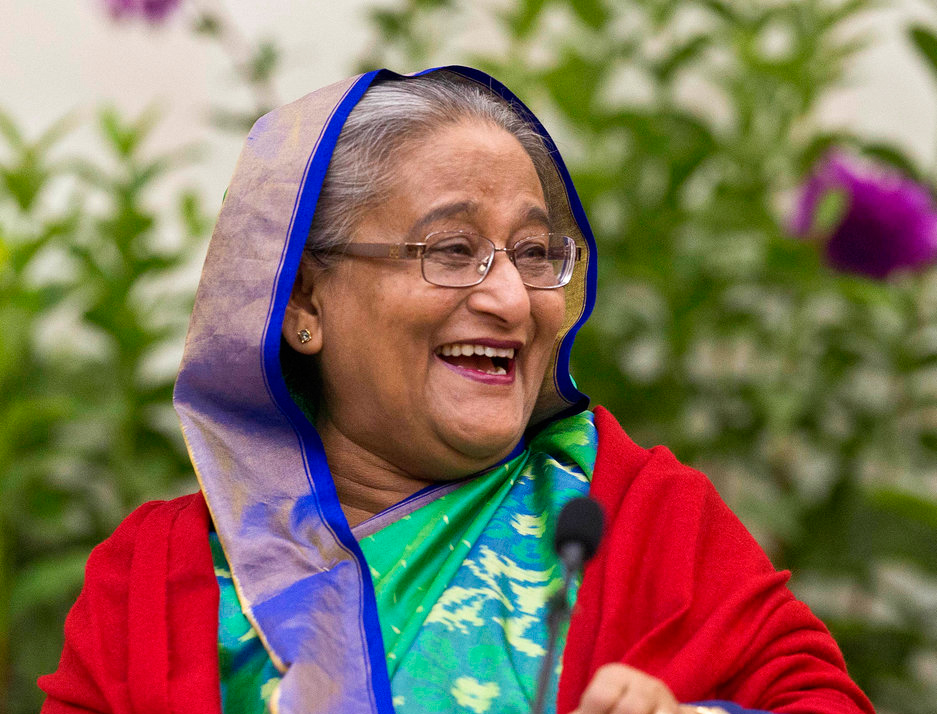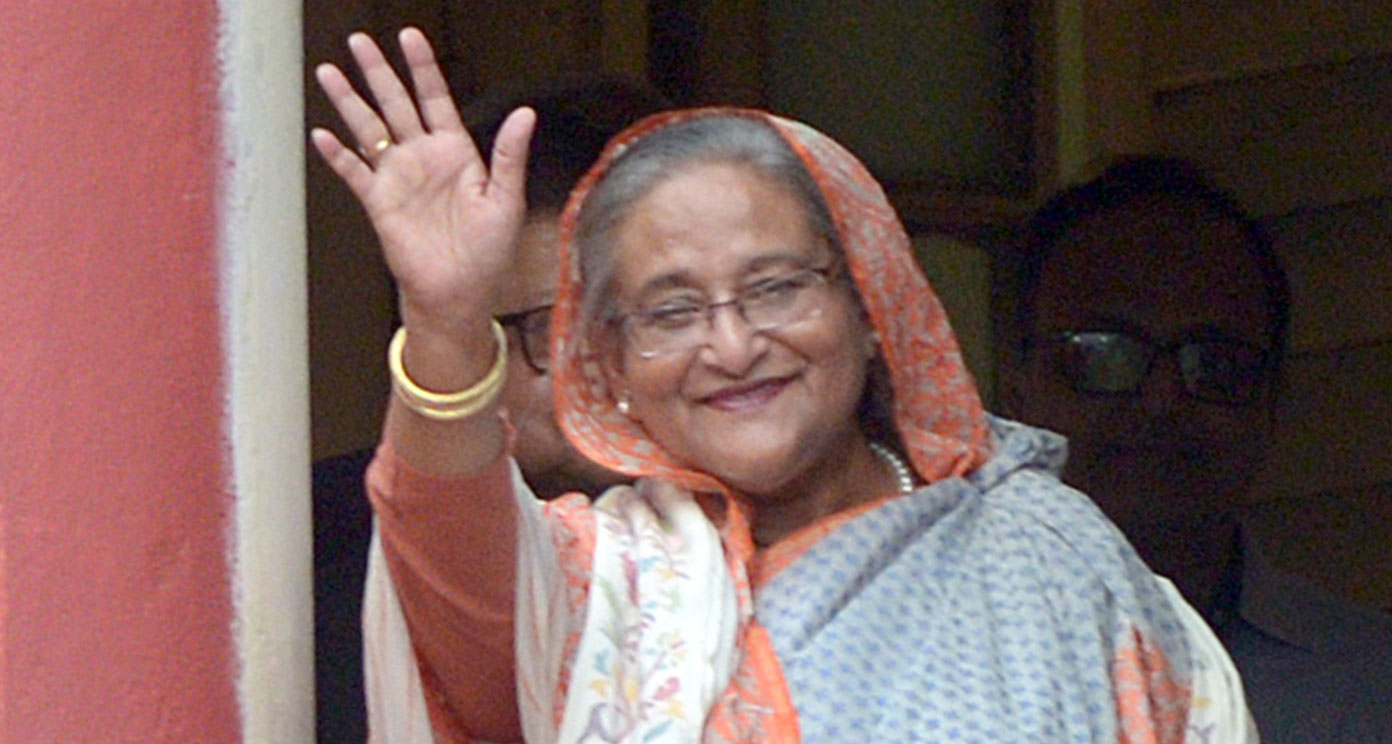Sheikh Hasina was sworn in for the fourth time as Prime Minister — third in a row since 2009 — of Bangladesh on Monday.
She took guard with 31 first-timers in a cabinet of 47, with the inclusion of the new faces hinting that the Prime Minister was preparing a team for the future.
President Md Abdul Hamid administered the oath to the cabinet at a ceremony held at the Darbar Hall of Bangabhaban, the official residence of the Bangladesh President. Besides Hasina, the new council of ministers has 24 ministers, 19 ministers of state and three deputy ministers.
The new cabinet’s composition became the topic of discussion in Dhaka as Hasina dropped 36 members of the outgoing cabinet, including Awami League bigwigs Amir Hossain Amu, Tofail Ahmed, Mohammed Nasim and Matia Chowdhury, who were in-charge of key departments like industry, commerce, health and agriculture. The cabinet also did not have a single member from the ruling Awami League’s electoral allies like the Jatiya Party, the Jatiya Samajtantrik Dal, the Workers’ Party and the Jatiya Party (Manju).
Together with 14 parties, the Awami League-led alliance bagged 288 seats in the 300-member parliament in the general election held on December 30.
There was no official explanation on why so many old ministers were replaced with new faces. However, several theories did the rounds in Dhaka, which witnessed intense lobbying in the run-up to the formation of the cabinet.
“The new cabinet is like an experiment… The Prime Minister wants to give the younger generation an exposure in running the affairs of the government,” said a source in the ruling Awami League.
As several members of the outgoing cabinet had crossed 70, the dominant theme behind creating the new team, a source said, was to “inject fresh blood” into government affairs.
In its manifesto, the Awami League made a number of promises like achieving the status of a developed country and eliminating poverty from Bangladesh by 2041. Some of the other promises included trebling per capita income in five years and giving a big push to manufacturing, industry and the knowledge economy.
“The Prime Minister is in her early seventies… In five years, she would be around 78. She will need a young and capable team to realise her dream and so the focus on youths is a right move,” said a source in Dhaka
The fact that none of her relatives — including her daughter’s father-in-law Khandker Mosharraf Hossain, a senior minister in the outgoing cabinet — made it to the cabinet was also hailed in the Awami League camp.
In the run up the polls, there was disquiet in a section of the ruling party as some of her relatives got nominations.
The decision to drop former shipping minister Shajahan Khan, whose insensitive comments after two students died in a road accident triggered a nationwide protest last August, drew loud cheers. “Though his punishment comes a bit late into the day, it’s good that finally he has been dropped,” said a young law student.
An editor of a leading news channel said that the new faces in the cabinet meant that there was no baggage from the past. “Some of the names in the last cabinet were tainted. Besides, there have been question marks over the one-sided poll outcome… The new faces in the cabinet will create a new narrative and that’s going to be a positive for the government,” said the editor.
The return of former foreign minister Dipu Moni as the country’s first education minister and appointment of Mohibul Hassan Chowdhury Nowfel, a thirty-four-year-old barrister, as a deputy minister under her were seen as positive steps.
“She has made a right beginning with a new team… Now, she has to deliver as people’s expectation after the resounding victory have got raised,” said a source in Dhaka.
He also added that he hoped that representatives from some of the allies would be given cabinet berths soon to make the council of minister more “inclusive”.












